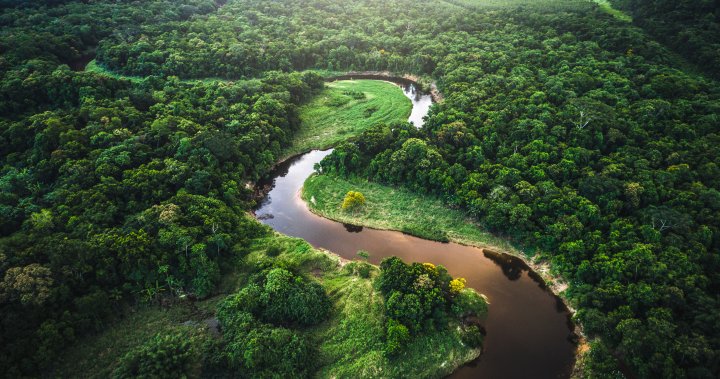In today’s digital age, almost everyone is connected — and now, thanks to Elon Musk’s Starlink, that even includes remote tribes in the Amazon rainforest.
Though most of the world has had decades to grapple with the repercussions of the internet, groups like those living in the Amazon’s Indigenous villages are playing catch-up to combat screen distractions, digital misinformation and pornography addiction.
New York Times journalist Jack Nicas and photographer Victor Moriyama ventured about 50 miles (80 kilometres) on foot into the rainforest to reach the Marubo villages. There, they witnessed firsthand how the Indigenous tribe struggles with maintaining traditional culture while connecting to the rest of the world online.
Starlink’s 2022 entry into Brazil made the high-speed digital connection possible. The SpaceX product has established internet access in remote locations around the world using low-orbiting Starlink satellites.
Some of the village elders told the NYT the younger generations have been less interested in traditional ways of life since the internet was brought to the community.
One elder said people in the tribe have become “lazy” and are “learning the ways of the white people,” but she still asked for the internet access to remain.
Enoque Marubo (all Marubo people use the same surname), a leader of the tribe, is a leading advocate for internet access. Still, he noted the internet was initially “detrimental,” specifically to the tribe’s hunting and fishing regimen. With so much to peruse online, no one wanted to do the work, he said.
For this reason, Enoque and other leaders agreed to implement limits to internet access. The internet is only on for two hours in the morning, five hours in the evening and on Sundays.
The email you need for the day’s
top news stories from Canada and around the world.
Alfredo Marubo, the leader of a Marubo association of villages, told the NYT he’s especially unsettled by the newfound prevalence of pornography among the tribe’s young men. Though the tribe’s traditional culture frowns on public romantic affections like kissing, Alfredo said many boys have been sharing sexually explicit videos in group chats.
Even video games, namely first-person shooters, have become an issue among the tribe, with some elders worrying they will inspire copycat violence.
The issue of internet access has triggered bitter disputes among Marubo political leaders, with arguments both for and against its usage.
Prior to the installation of Starlink antennas in the region, many Marubo already had cellphones. The phones were used to communicate when in the city or to take photographs.
Of course, these tribes having internet access isn’t entirely a bad thing. With Starlink, the Marubo people can stay better connected to other nearby villages, alert one another of potential dangers and discover new job and education opportunities.
Many of the young Marubo tribe members now dream of travelling the world or establishing careers in cities beyond the rainforest.
Enoque told the NYT one of the biggest benefits of the internet is during emergencies. Should a member of the tribe be bitten by a venomous snake, they can now call a helicopter for an airlift to the hospital, rather than relaying numerous radio messages.
The internet has given the Marubo people autonomy, and according to Enoque, has “already saved lives.”
Marubo leaders have no plans to get rid of the internet in their communities.
The Marubo people live in the upper Amazon Basin, along the Ituí River in Brazil. They are a 2,000-member tribe, and not entirely isolated prior to the implementation of Starlink. They were first contacted by rubber tappers in the 19th century.
Starlink has made it possible for people around the world to access the internet in regions where it was previously impossible. This includes the Sahara, the Mongolian grasslands and use by soldiers in Ukraine at the frontlines of the war with Russia.
Even rural areas in Canada have benefitted from Starlink, namely regions where land-based internet infrastructure is not yet possible or covered by approved broadband funding programs.
In May, Musk said Starlink reached over 3 million customers in 99 different countries.
© 2024 Global News, a division of Corus Entertainment Inc.






